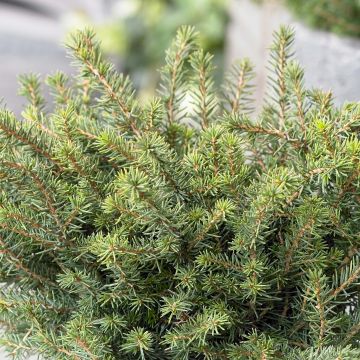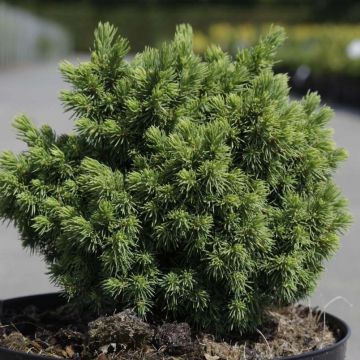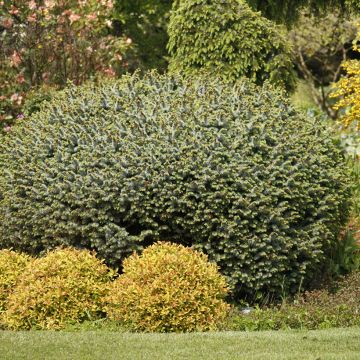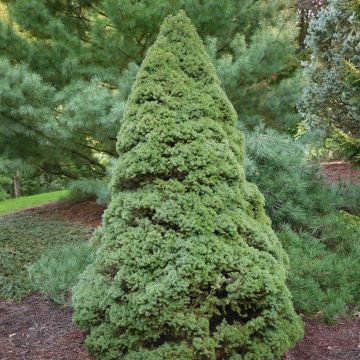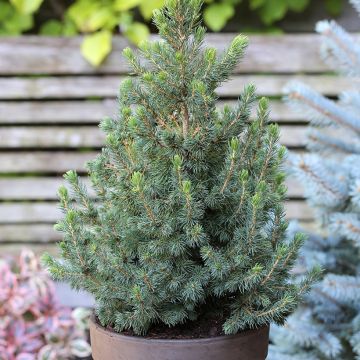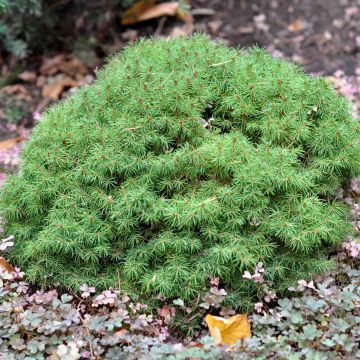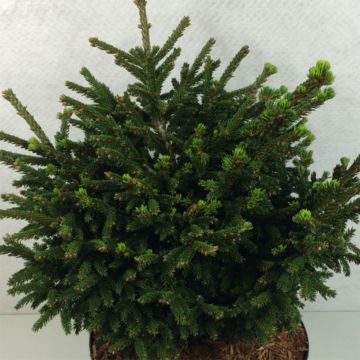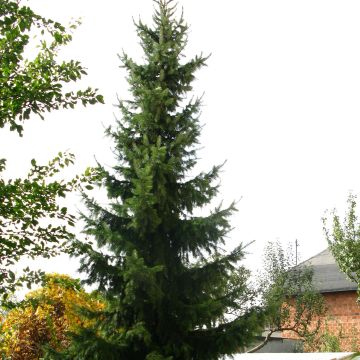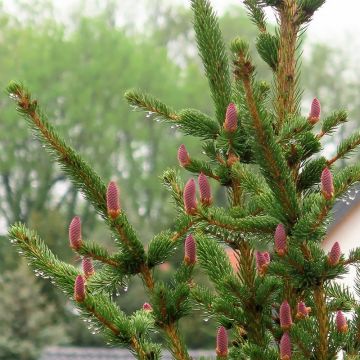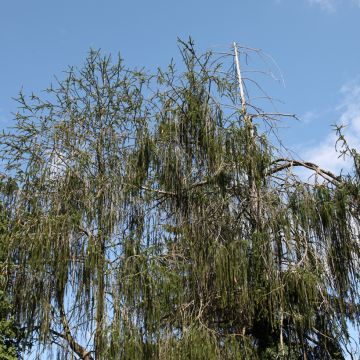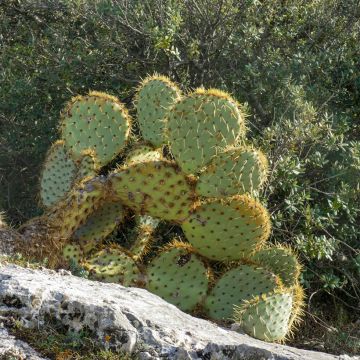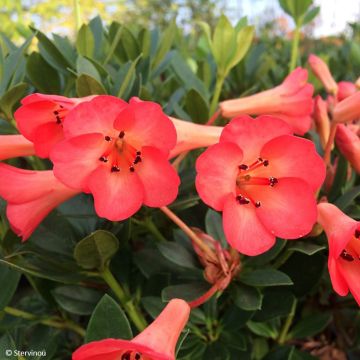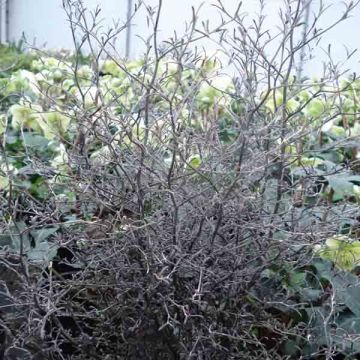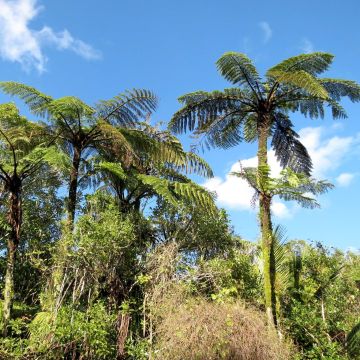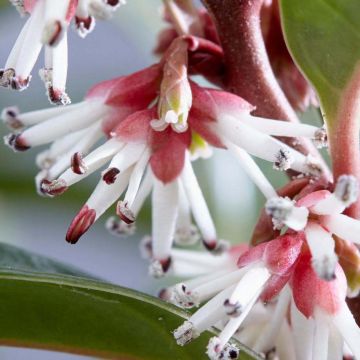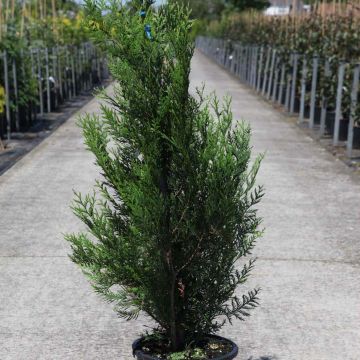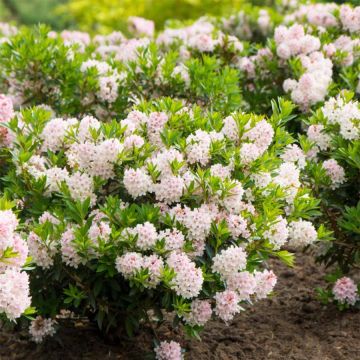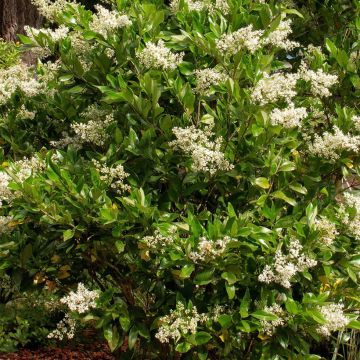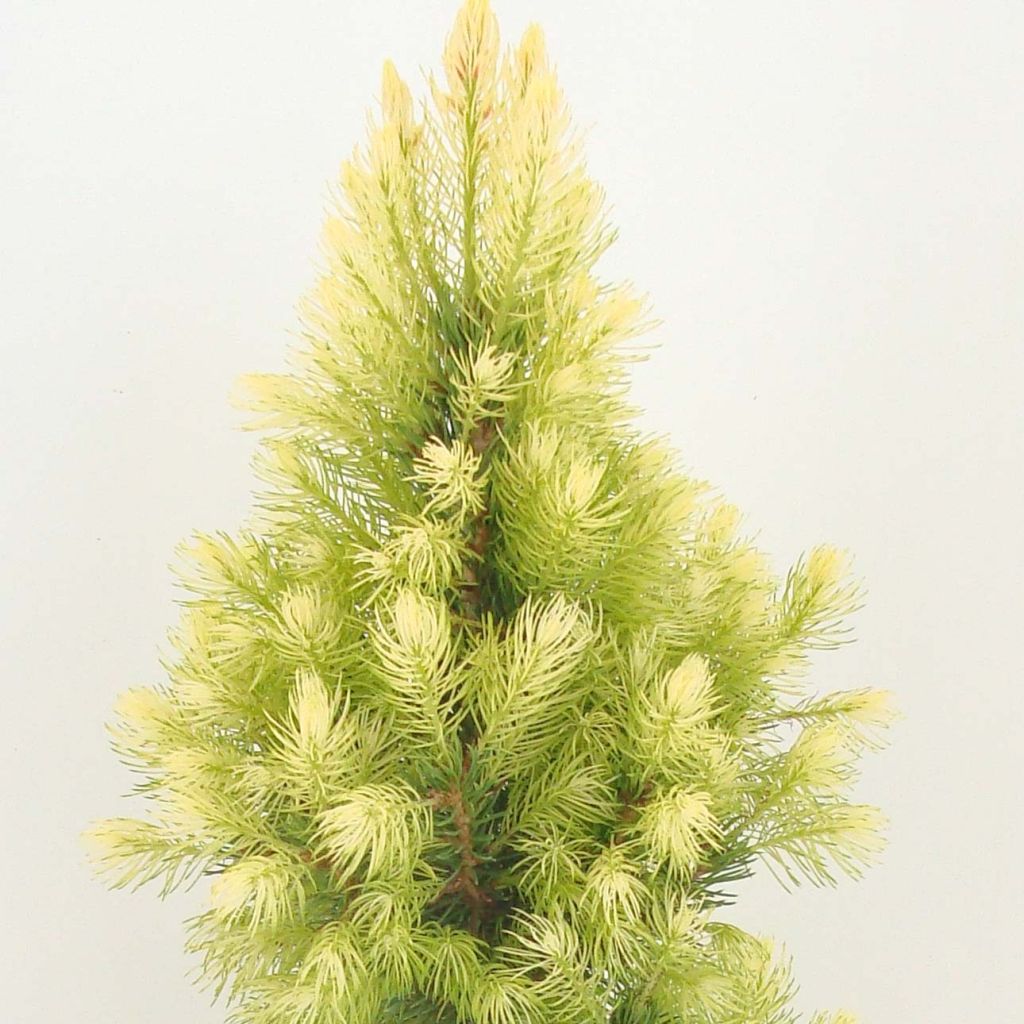

White spruce - Picea glauca Daisys White
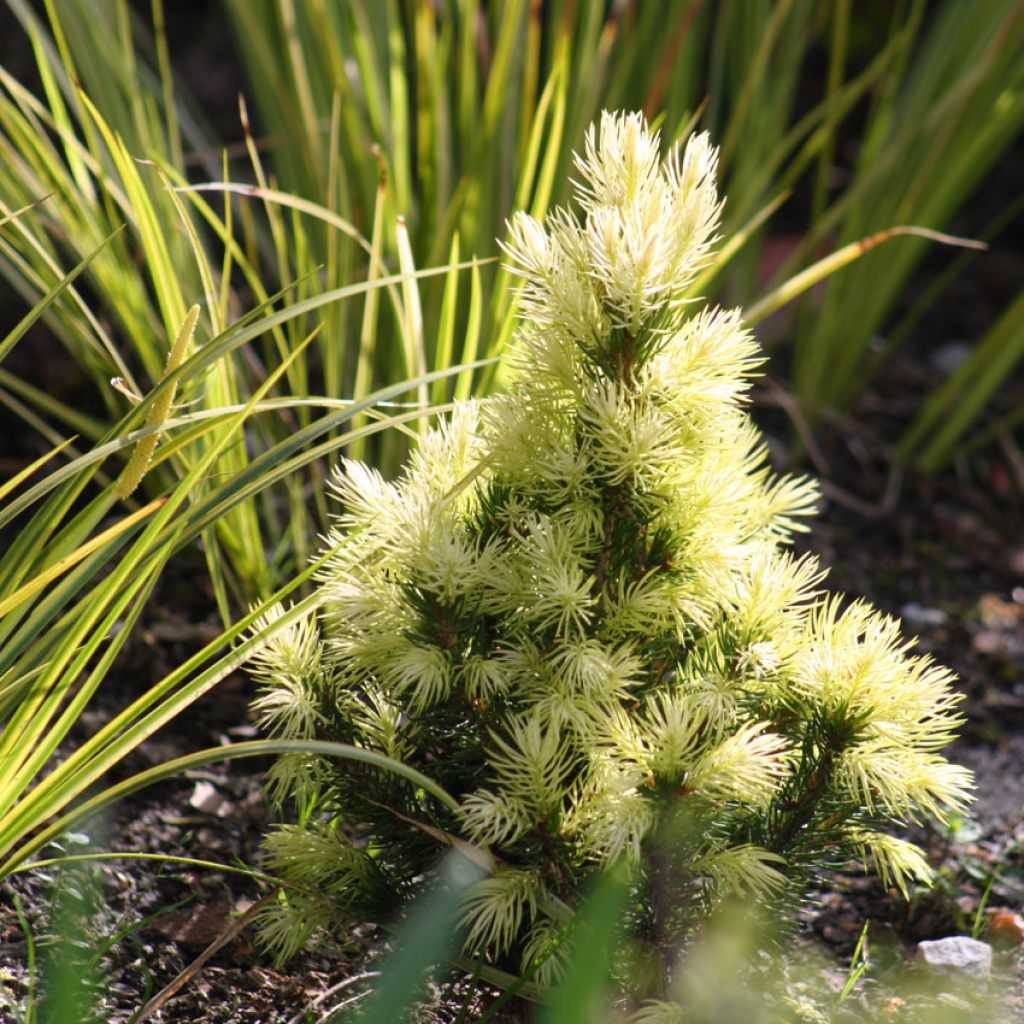

White spruce - Picea glauca Daisys White
White spruce - Picea glauca Daisys White
Picea glauca Daisy's White
White Spruce, Canadian Spruce, Skunk Spruce, Cat Spruce, Black Hills Spruce, Western White Spruce, Alberta White Spruce, Porsild Spruce
This item cannot be shipped to the selected country
Delivery charge from €5.90
Delivery charge from €5.90
More information
Schedule delivery date,
and select date in basket
This plant carries a 24 months recovery warranty
More information
We guarantee the quality of our plants for a full growing cycle, and will replace at our expense any plant that fails to recover under normal climatic and planting conditions.
From €5.90 for pickup delivery and €6.90 for home delivery
Express home delivery from €8.90.
From €5.90 for pickup delivery and €6.90 for home delivery
Express home delivery from €8.90.

Does this plant fit my garden?
Set up your Plantfit profile →
Description
The Picea glauca 'Daisy's White' is the cream form of the famous Picea glauca 'Conica'. This miniature white spruce gradually forms a perfect pyramid, covered with very regular vegetation. Its young white to pale yellow shoots overwhelm the old dark green foliage in spring, irresistibly attracting attention. Its very soft-looking foliage is dense and composed of fine, short and tight needles. Slow-growing, it is perfectly suited for rockeries, livens up flower beds, and performs well in pots. It is a small, undemanding and highly adaptable conifer, in well-drained soil and in a semi-shaded position.
The Picea glauca, also known as White spruce or Glauca spruce, is an evergreen conifer belonging to the pinaceae family, native to Canada. In its natural environment, it grows slowly and has a quite variable habit depending on its habitat, usually conical or pyramidal with a broad base. This tree can reach a height of 25m (82ft). This species is traditionally used for paper production. It can live for many years (200 or more).
The variety 'Daisy's White', derived from this species, is a dwarf and elegant form, with a compact, conical and upright habit. It grows slowly, at a rate of 5 to 8cm (3.1in) per year. It will slowly reach 1m (3.3ft)to 1.5m (4.9ft) in height and 80cm (31.5in) to 1m (3.3ft) in width, sometimes more in cool and humid climates. It produces short and very tight staggered branches, covered with short and quadrangular needles arranged in brushes, very sharp and aromatic with a covering of white wax. The young shoots, bright and soft, are very light, then its foliage takes a uniformly dark green to green-blue shade, varying according to the plant. In spring, the contrast is striking. Some branches become similar to those of 'Conica'; they are then covered with green needles. The root system of white spruces is shallow, highly branched, and creeping, which makes them difficult to transplant when they are mature and particularly sensitive to wind.
The 'Daisy's White' spruce, with its unique colour, perfect habit, very reduced growth and maintenance-free is a perfect plant for rockeries, terraces, or single planting. It thrives in many situations, in various climates, as long as the soil is well-drained and not too chalky. This plant with "platinum blonde" foliage goes well with red foliage (Photinia fraseri Little Red Robin) or purple foliage (Pittosporum tenuifolium Purpureum). It works wonders with large stones, geometric lines, and masonry. The architectural qualities of conifers naturally works in the design of a contemporary garden, which prefers the aesthetics of shapes, silhouettes, and textures to flowering. These plants durably structure a flower bed, mark pathways and border terraces, easily replacing the strong presence of trimmed boxwood or holly. They go well with heathers or ground cover plants such as aubrietas, cerastiums, shrubby salvias, as well as flowering shrubs. The key is to play with volumes and colours.
Report an error about the product description
White spruce - Picea glauca Daisys White in pictures
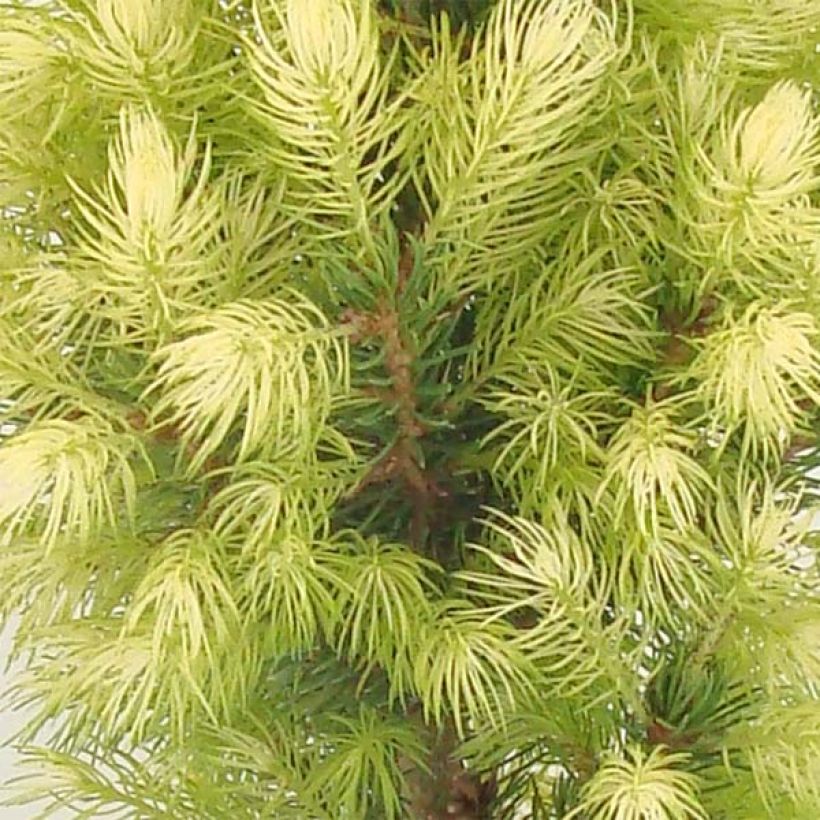

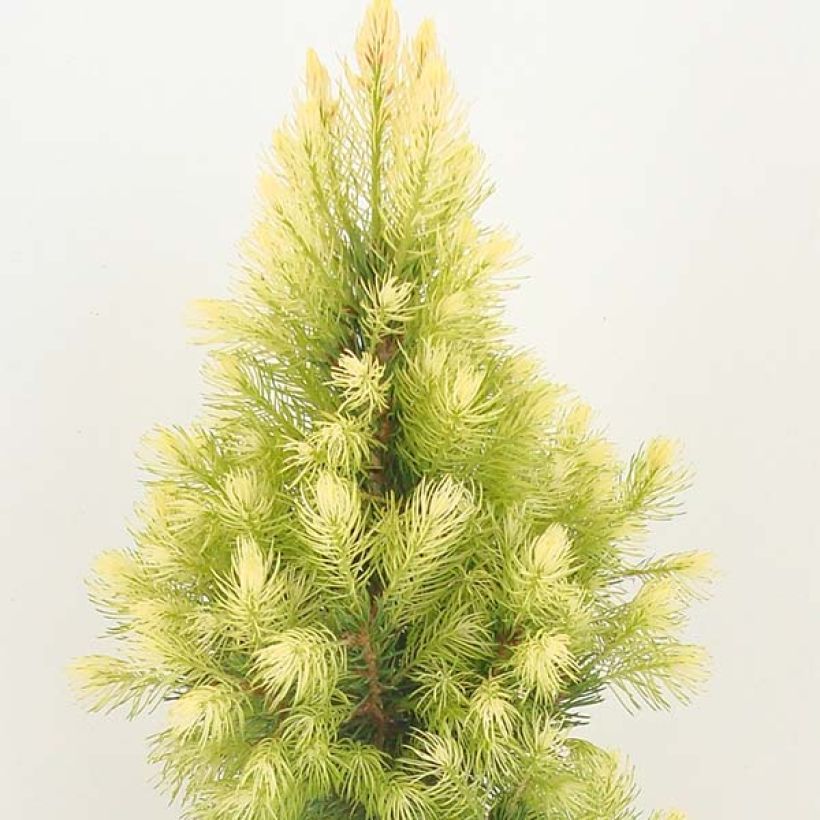

Plant habit
Foliage
Botanical data
Picea
glauca
Daisy's White
Pinaceae
White Spruce, Canadian Spruce, Skunk Spruce, Cat Spruce, Black Hills Spruce, Western White Spruce, Alberta White Spruce, Porsild Spruce
Cultivar or hybrid
Other Picea
Planting and care
The Picea glauca 'Daisy's White' is best planted from September to November and from February to June in deep, well-drained, light, preferably neutral, moist to dry soil. A sandy, loamy or rocky soil that is not too chalky will be perfect. Choose a sunny or semi-shady spot, preferably shaded in the afternoon, and sheltered from prevailing winds. In overly sunny and dry situations, it will be more susceptible to attacks from red spiders and its young foliage may risk scorching. Soak the rootballs well before planting. Apply organic fertiliser at planting and water generously in the first years, and during prolonged drought. Apply a special conifer fertilizer every year in April and weed the soil in summer. This extremely hardy conifer dislikes heavy soils that are waterlogged in winter. Pruning is not recommended as this pyramid-shaped plant reaches its full potential when allowed to grow freely.
Planting period
Intended location
Care
-
, onOrder confirmed
Reply from on Promesse de fleurs
Evergreen shrubs
Haven't found what you were looking for?
Hardiness is the lowest winter temperature a plant can endure without suffering serious damage or even dying. However, hardiness is affected by location (a sheltered area, such as a patio), protection (winter cover) and soil type (hardiness is improved by well-drained soil).

Photo Sharing Terms & Conditions
In order to encourage gardeners to interact and share their experiences, Promesse de fleurs offers various media enabling content to be uploaded onto its Site - in particular via the ‘Photo sharing’ module.
The User agrees to refrain from:
- Posting any content that is illegal, prejudicial, insulting, racist, inciteful to hatred, revisionist, contrary to public decency, that infringes on privacy or on the privacy rights of third parties, in particular the publicity rights of persons and goods, intellectual property rights, or the right to privacy.
- Submitting content on behalf of a third party;
- Impersonate the identity of a third party and/or publish any personal information about a third party;
In general, the User undertakes to refrain from any unethical behaviour.
All Content (in particular text, comments, files, images, photos, videos, creative works, etc.), which may be subject to property or intellectual property rights, image or other private rights, shall remain the property of the User, subject to the limited rights granted by the terms of the licence granted by Promesse de fleurs as stated below. Users are at liberty to publish or not to publish such Content on the Site, notably via the ‘Photo Sharing’ facility, and accept that this Content shall be made public and freely accessible, notably on the Internet.
Users further acknowledge, undertake to have ,and guarantee that they hold all necessary rights and permissions to publish such material on the Site, in particular with regard to the legislation in force pertaining to any privacy, property, intellectual property, image, or contractual rights, or rights of any other nature. By publishing such Content on the Site, Users acknowledge accepting full liability as publishers of the Content within the meaning of the law, and grant Promesse de fleurs, free of charge, an inclusive, worldwide licence for the said Content for the entire duration of its publication, including all reproduction, representation, up/downloading, displaying, performing, transmission, and storage rights.
Users also grant permission for their name to be linked to the Content and accept that this link may not always be made available.
By engaging in posting material, Users consent to their Content becoming automatically accessible on the Internet, in particular on other sites and/or blogs and/or web pages of the Promesse de fleurs site, including in particular social pages and the Promesse de fleurs catalogue.
Users may secure the removal of entrusted content free of charge by issuing a simple request via our contact form.
The flowering period indicated on our website applies to countries and regions located in USDA zone 8 (France, the United Kingdom, Ireland, the Netherlands, etc.)
It will vary according to where you live:
- In zones 9 to 10 (Italy, Spain, Greece, etc.), flowering will occur about 2 to 4 weeks earlier.
- In zones 6 to 7 (Germany, Poland, Slovenia, and lower mountainous regions), flowering will be delayed by 2 to 3 weeks.
- In zone 5 (Central Europe, Scandinavia), blooming will be delayed by 3 to 5 weeks.
In temperate climates, pruning of spring-flowering shrubs (forsythia, spireas, etc.) should be done just after flowering.
Pruning of summer-flowering shrubs (Indian Lilac, Perovskia, etc.) can be done in winter or spring.
In cold regions as well as with frost-sensitive plants, avoid pruning too early when severe frosts may still occur.
The planting period indicated on our website applies to countries and regions located in USDA zone 8 (France, United Kingdom, Ireland, Netherlands).
It will vary according to where you live:
- In Mediterranean zones (Marseille, Madrid, Milan, etc.), autumn and winter are the best planting periods.
- In continental zones (Strasbourg, Munich, Vienna, etc.), delay planting by 2 to 3 weeks in spring and bring it forward by 2 to 4 weeks in autumn.
- In mountainous regions (the Alps, Pyrenees, Carpathians, etc.), it is best to plant in late spring (May-June) or late summer (August-September).
The harvesting period indicated on our website applies to countries and regions in USDA zone 8 (France, England, Ireland, the Netherlands).
In colder areas (Scandinavia, Poland, Austria...) fruit and vegetable harvests are likely to be delayed by 3-4 weeks.
In warmer areas (Italy, Spain, Greece, etc.), harvesting will probably take place earlier, depending on weather conditions.
The sowing periods indicated on our website apply to countries and regions within USDA Zone 8 (France, UK, Ireland, Netherlands).
In colder areas (Scandinavia, Poland, Austria...), delay any outdoor sowing by 3-4 weeks, or sow under glass.
In warmer climes (Italy, Spain, Greece, etc.), bring outdoor sowing forward by a few weeks.

































